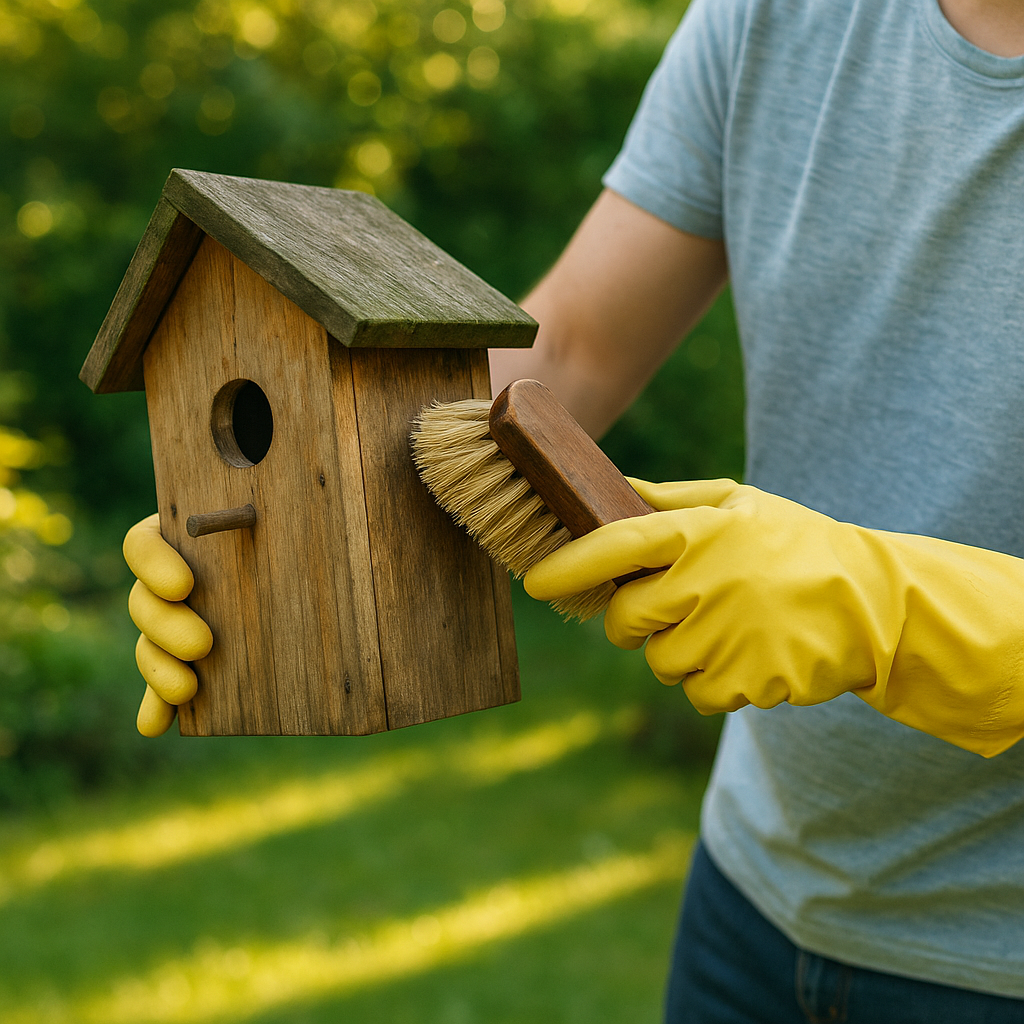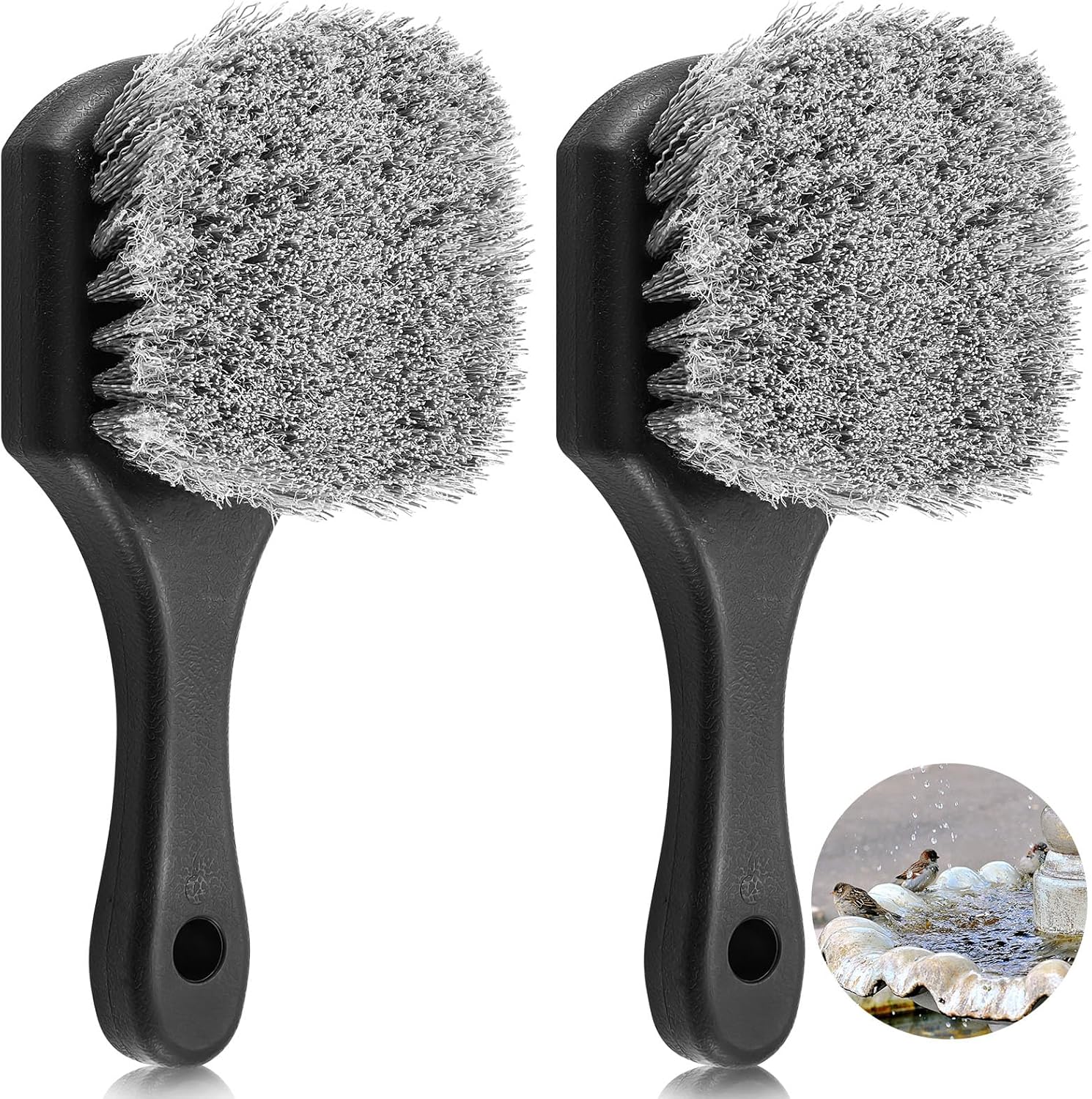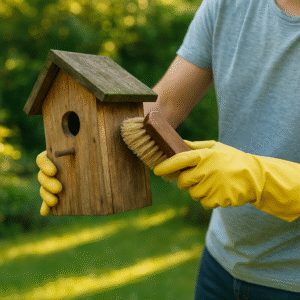How to Clean a Birdhouse: A Step-by-Step Expert Guide for a Healthy Nest

Watching a family of birds fledge from a house you’ve provided is one of the greatest rewards in backyard birding. But once the last fledgling has flown, our job as a responsible “bird landlord” isn’t over. In fact, one of the most crucial tasks is just beginning: the annual clean-out. It’s a task that might seem a bit unpleasant, but I’ve come to see it as a final, vital act of stewardship for the birds I’ve hosted all season.
I learned the importance of this the hard way. Early on, I had a bluebird house that hosted three successful broods in a single summer. I was so thrilled that I left the final nest intact, thinking of it as a memento. The next spring, the bluebirds returned, inspected the house, and left, never to return. When I finally opened the box, I was horrified. The old nest was compacted, moldy, and infested with what I later learned were the pupae of parasitic blowflies. My sentimentality had turned a safe nursery into a contaminated, unusable space. Since that day, the annual clean-out has become a non-negotiable ritual in my yard.
This guide will walk you through everything you need to know to perform this essential task safely and effectively. We’ll cover why it’s so important, the exact right time to do it, and a detailed, step-by-step process with the right tools for the job, ensuring your birdhouses are clean, safe, and ready to welcome the next generation.
The Birdhouse Cleaning Process in a Nutshell
For a safe and effective clean-out, follow these core steps in the late fall, after nesting season is over.
- Confirm the House is Empty: Observe the house for several days to ensure no birds are using it for nesting or roosting.
- Gear Up for Safety: Wear protective gloves and a dust mask to avoid contact with bacteria and parasites.
- Remove the Old Nest: Open the birdhouse and remove all nesting material. A putty knife or scraper is useful for packed-down nests.
- Scrub the Interior: Use a stiff brush to scrub out all dried feces, insect casings, and debris from the walls, floor, and ceiling.
- Sanitize the Box: Scrub the interior with a weak disinfectant solution. A solution of one part bleach to nine parts water, or a 50/50 solution of white vinegar and water, works well.
- Rinse Thoroughly: Use a hose or clean, wet cloths to rinse out all traces of the cleaning solution.
- Dry Completely: Let the birdhouse air dry in the sun for several hours. The interior must be bone-dry before you close it up to prevent mold growth.
Why is Cleaning a Birdhouse So Important?
Leaving an old nest in a birdhouse is like a hotel leaving the previous guest’s dirty linens in the room for the next visitor. It’s unsanitary and dangerous. A thorough annual cleaning accomplishes several critical goals:
1. It Removes Harmful Parasites
An old nest is a breeding ground for parasites that can harm or kill nestlings. The most common culprits are bird mites, lice, and the larvae of parasitic blowflies. Blowfly larvae, in particular, can attach to young birds and feed on their blood, causing anemia, stunted growth, and even death. Removing the old nest material gets rid of the eggs and pupae of these pests, giving next year’s brood a clean, healthy start.
2. It Eliminates Bacteria and Mold
Over a nesting season, fecal matter from the chicks builds up in and around the nest. This, combined with any moisture that gets in, creates a perfect environment for harmful bacteria and mold to grow. These pathogens can cause respiratory infections and other diseases in both adult and young birds. A full sanitization is key to a healthy nursery.
3. It Makes Room for a New Nest
Many cavity-nesting birds will not build a new nest on top of an old one. If the box is full of last year’s material, they will simply pass it by and look for a different location. Some species, like House Wrens, are known to build on top of old nests, but this raises the chicks closer to the entrance hole, making them more vulnerable to predators like raccoons who can reach inside. A clean, empty box is always the most attractive and safest option.
4. It Provides Safe Winter Shelter
A clean birdhouse isn’t just for nesting. In the harsh winter months, many non-migratory birds like bluebirds, chickadees, and titmice will use a clean birdhouse as a communal roosting spot to shelter from bitter cold and predators. It’s a crucial survival strategy. Our article exploring if birds sleep in the same place every night dives deeper into this behavior. A box cluttered with a filthy old nest is useless for this purpose.
The Definitive Guide to Cleaning Your Birdhouse
When to Clean: Timing is Crucial
The main, deep cleaning should be done once a year, in the late fall or early winter, after you are absolutely certain that nesting season is over for all species in your area. For most of the U.S., October or November is a safe bet.
What about between broods? Some birds, like bluebirds and wrens, will raise multiple broods in a single season. It is generally recommended to remove the old nest after the first brood has fledged. Wait a day or two to be sure the family has moved on, then quickly remove the nest material. You don’t need to do a full scrub and sanitization at this point; just clearing out the old material is enough. The parents will then build a fresh, clean nest for their next brood.
The Essential Toolkit for the Job
Having the right tools makes the job faster, safer, and more effective. Here’s my go-to cleaning kit.
- Protective Gloves: To keep your hands clean and safe from bacteria.
- Dust Mask: To avoid inhaling dust, mold spores, and dander.
- Putty Knife or Scraper: For removing tough, compacted nests.
- Stiff Brushes: An old toothbrush and a larger scrub brush are perfect.
- Bucket: For your cleaning solution.
- Your Choice of Disinfectant: Bleach or white vinegar.
- Hose or Spray Bottle: For rinsing.

Your Birdhouse Cleaning Starter Kit
This simple combination is the foundation of a safe and effective cleaning process. A pair of durable work gloves like these from OZERO protects your hands from grime and scrapes. This OXO Good Grips brush set is my secret weapon; the large brush is great for the main surfaces, while the small, stiff-bristled detail brush is perfect for getting into the corners and scraping away stubborn debris. These two items will handle 90% of the cleaning job with ease.
Check Price on AmazonThe Step-by-Step Cleaning Process
Step 1: Observe and Confirm it’s Empty
Before you even touch the house, be 100% sure it’s vacant. Watch it from a distance for a day or two. If birds are still entering and exiting, they may be starting a late brood or using it for roosting. If you’re unsure, tap gently on the side of the box and listen. If you hear any scurrying or peeping, leave it alone and check back in a week.
Step 2: Remove the Old Nest
Put on your gloves and mask. Open the birdhouse’s clean-out door. Most well-designed houses will have a side panel or roof that opens easily. Reach in and pull out all the old nesting material. Some nests will come out in one piece, while others, like those of bluebirds, can be packed down and will require a putty knife to scrape them off the floor. Dispose of the old nest in your compost pile or trash, far away from the birdhouse.
Step 3: The Deep Scrub
Using your stiff brushes, give the entire interior a thorough scrubbing. Scrape every surface—the floor, walls, ceiling, and inside of the entrance hole—to remove all dried feces, insect casings, and caked-on debris. This physical removal of grime is just as important as the sanitization step.
Step 4: Sanitize for a Healthy Home
Next, you need to kill any remaining bacteria, mold spores, and parasite eggs. You have two excellent options:
- Bleach Solution (The Gold Standard): Mix a solution of one part household bleach to nine parts water. This is the most effective way to kill all pathogens.
- Vinegar Solution (The Natural Alternative): If you prefer to avoid bleach, a solution of one part white vinegar to one part water is a great natural disinfectant that will kill most mold and bacteria.
Use your scrub brush to apply the solution to all interior surfaces, scrubbing as you go. Let the solution sit for about 10 minutes.

For Easy Application: A Heavy-Duty Spray Bottle
While you can use a bucket and brush, I’ve found that a dedicated spray bottle makes the sanitizing step much easier and more thorough. You can mix your bleach or vinegar solution directly in this heavy-duty bottle from HARRIS. It allows you to spray the solution evenly into every corner and crevice of the birdhouse, ensuring complete coverage. It’s a small tool that makes a big difference in the efficiency of your cleaning routine.
Check Price on AmazonStep 5: Rinse, Rinse, and Rinse Again
This step is critical. You must remove all traces of your cleaning solution. Use a garden hose with a gentle spray setting or several cloths soaked in clean water to thoroughly rinse the entire interior of the box. Any residue, especially from bleach, can be harmful to birds.
Step 6: Let It Dry Completely
Place the open, empty birdhouse in a sunny, breezy spot and let it air dry for several hours, or even a full day. The interior must be 100% dry before you close it. Closing up a damp birdhouse will cause mold and mildew to grow, undoing all your hard work.
Step 7: Final Inspection and Repair
Before you close it up, do a quick inspection. Are there any loose screws? Have squirrels chewed on the entrance hole? If so, now is the time to make repairs. Consider adding a metal birdhouse entry protector to prevent future damage. Ensure the drainage holes are clear of debris.
A Note on Choosing an “Easy-to-Clean” Birdhouse
This entire process is made infinitely easier if you start with a birdhouse designed for maintenance. When you’re choosing a new house, look for one where a side panel, the front, or the roof opens easily without requiring tools. The houses we feature in our birdhouse reviews are all selected with this crucial feature in mind. A beautiful house that is sealed shut is ultimately a disposable, one-season house.
Frequently Asked Questions (FAQ)
What if I find an unhatched egg in the nest?
It is technically illegal to remove the nests or eggs of native birds under the Migratory Bird Treaty Act. However, if the nest is clearly abandoned and the eggs are cold, it is generally understood that the nest has failed and can be cleaned out at the end of the season. Dispose of the old nest and eggs together.
I opened my birdhouse and a mouse jumped out! What do I do?
This is common, especially in the winter. Deer mice often use birdhouses for shelter. If you find a mouse nest, you’ll want to take extra precautions. Wear a good mask and gloves, as mouse droppings can carry diseases like Hantavirus. Soak the nesting material with your bleach solution before removing it to neutralize any pathogens. Then proceed with a very thorough scrub and sanitization.
Do I need to clean a brand-new birdhouse before putting it up?
No, a new birdhouse is ready to go. The raw, clean wood is exactly what birds are looking for. The first cleaning will be after its first successful nesting season.
Conclusion: The Final Act of a Good Host
Cleaning a birdhouse is more than a chore; it’s a critical part of the partnership we have with the wild creatures we invite into our yards. It’s our responsibility to ensure the homes we provide are not just available, but safe, sanitary, and truly beneficial. By following this simple annual routine, you are dramatically increasing the chances of nesting success for years to come. You are ensuring that the final act of one season becomes the safe and hopeful beginning of the next.

